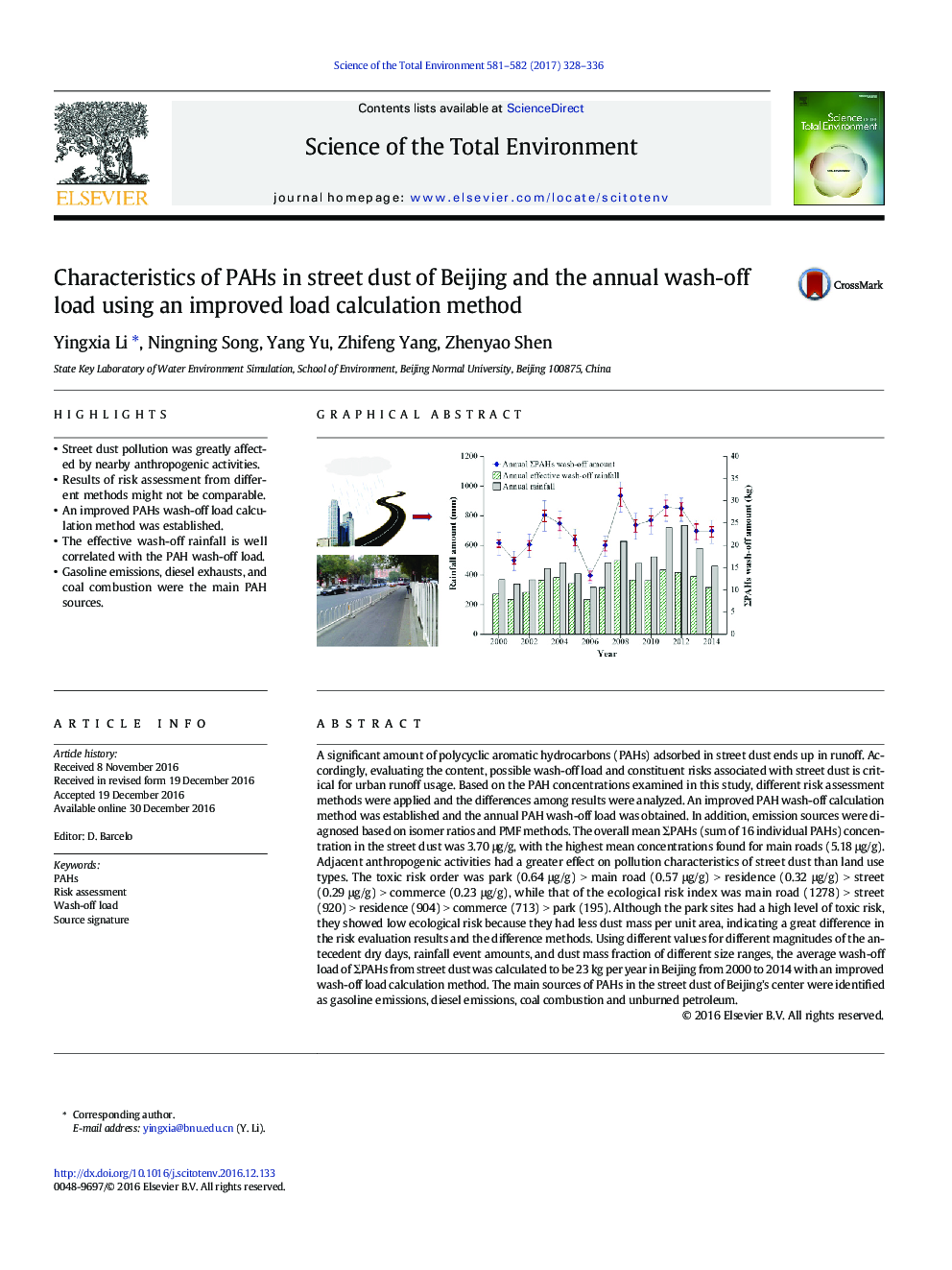| Article ID | Journal | Published Year | Pages | File Type |
|---|---|---|---|---|
| 5751779 | Science of The Total Environment | 2017 | 9 Pages |
â¢Street dust pollution was greatly affected by nearby anthropogenic activities.â¢Results of risk assessment from different methods might not be comparable.â¢An improved PAHs wash-off load calculation method was established.â¢The effective wash-off rainfall is well correlated with the PAH wash-off load.â¢Gasoline emissions, diesel exhausts, and coal combustion were the main PAH sources.
A significant amount of polycyclic aromatic hydrocarbons (PAHs) adsorbed in street dust ends up in runoff. Accordingly, evaluating the content, possible wash-off load and constituent risks associated with street dust is critical for urban runoff usage. Based on the PAH concentrations examined in this study, different risk assessment methods were applied and the differences among results were analyzed. An improved PAH wash-off calculation method was established and the annual PAH wash-off load was obtained. In addition, emission sources were diagnosed based on isomer ratios and PMF methods. The overall mean ΣPAHs (sum of 16 individual PAHs) concentration in the street dust was 3.70 μg/g, with the highest mean concentrations found for main roads (5.18 μg/g). Adjacent anthropogenic activities had a greater effect on pollution characteristics of street dust than land use types. The toxic risk order was park (0.64 μg/g) > main road (0.57 μg/g) > residence (0.32 μg/g) > street (0.29 μg/g) > commerce (0.23 μg/g), while that of the ecological risk index was main road (1278) > street (920) > residence (904) > commerce (713) > park (195). Although the park sites had a high level of toxic risk, they showed low ecological risk because they had less dust mass per unit area, indicating a great difference in the risk evaluation results and the difference methods. Using different values for different magnitudes of the antecedent dry days, rainfall event amounts, and dust mass fraction of different size ranges, the average wash-off load of ΣPAHs from street dust was calculated to be 23 kg per year in Beijing from 2000 to 2014 with an improved wash-off load calculation method. The main sources of PAHs in the street dust of Beijing's center were identified as gasoline emissions, diesel emissions, coal combustion and unburned petroleum.
Graphical abstractDownload high-res image (291KB)Download full-size image
